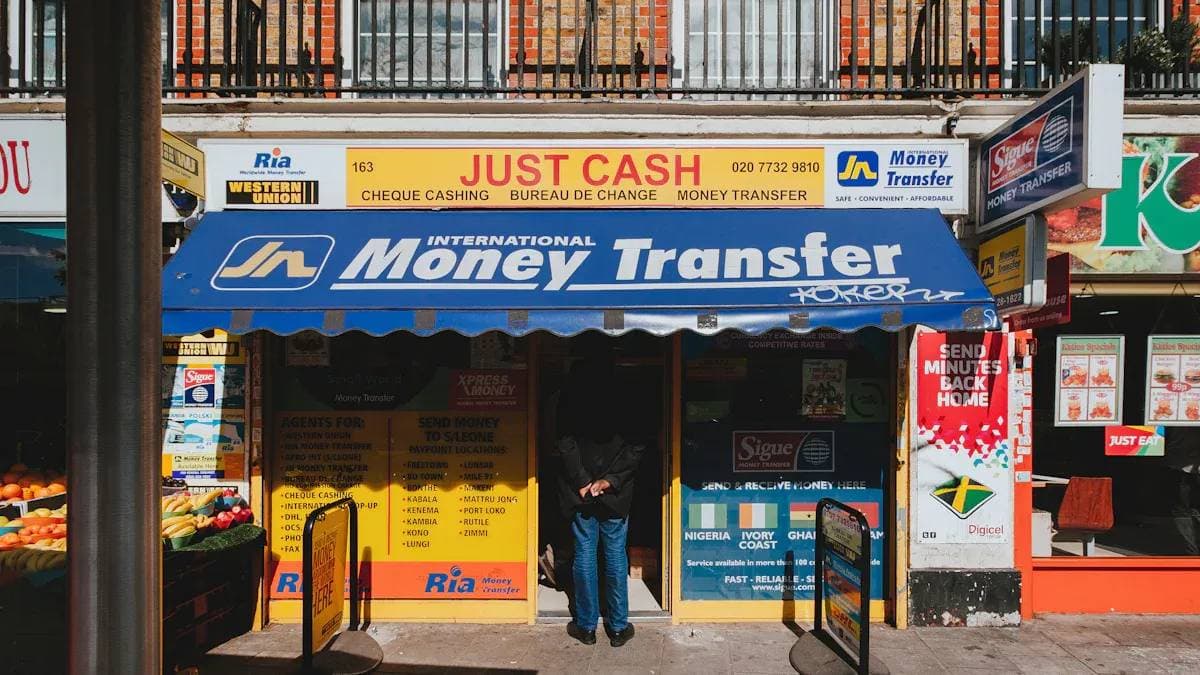- EasyCard
- Trade
- Help
- Announcement
- Academy
- SWIFT Code
- Iban Number
- Referral
- Customer Service
- Blog
- Creator
What is a Bank Routing Number? Analysis of Its Functions, Uses, and Security
A bank routing number is a unique code used to identify financial institutions and plays a crucial role in electronic deposits, bank transfers, and international remittances. Ensuring the correct routing number is entered helps funds reach the recipient’s account safely. For users in need of cross - border transfers, BiyaPay offers a more efficient and secure way to make the flow of funds smoother.

What is the Role of a Bank Routing Number?
The main function of a bank routing number is to ensure the accurate transfer of funds within the banking system. This nine - digit code is an important part of the US financial system and is widely used in electronic payments, automatic deposits, check processing, and international remittances.
In domestic transactions, the bank routing number is used in conjunction with the account number to identify the sender and recipient of funds. For example, when a company pays its employees’ salaries, it uses the routing number of the employees’ bank accounts to complete the automatic deposit. Similarly, when individuals make online bill payments, they also need to provide the routing number to ensure that funds are deducted from the correct account.
In international transfers, the bank routing number is usually used in combination with the SWIFT code or IBAN (International Bank Account Number) to improve the security and accuracy of cross - border payments. The transaction process between international banks is relatively complex, and the accuracy of the routing number directly determines the efficiency of fund transfer. Therefore, when making cross - border remittances, users should verify all necessary bank information to avoid delays or loss of funds.
In addition, the bank routing number can also be used for the tracking and verification of internal transactions of financial institutions, ensuring the smooth flow of funds between different banks and accounts, thereby reducing the possibility of transaction errors.
How to Obtain a Bank Routing Number?
Users can obtain the bank routing number through various ways to ensure the correct transfer of funds:
- Check the check: In the United States, the bank routing number is usually printed at the bottom of the check, on the left side of the check number.
- Access the online bank account: Most banks provide the bank routing number on their official websites or mobile applications. Users can find the relevant information through the account details page.
- Contact the bank’s customer service: If the correct routing number cannot be found through the check or online banking, users can call the bank’s customer service hotline, and the customer service staff can provide accurate information.
- Use the query tool on the bank’s official website: Some banks provide an online query function. Users only need to enter the bank name or branch information to obtain the corresponding routing number.
When entering the bank routing number, it is recommended that users double - check to ensure that the transaction will not fail or the funds will not be delayed due to incorrect filling.
What is the Importance of Bank Routing Numbers in International Transfers?
Bank routing numbers are not only applicable to domestic payments but also play a vital role in international transfers.
In international bank transactions, bank routing numbers are usually used to verify the identity of financial institutions and ensure that cross - border funds can be smoothly transferred to the correct bank account. Due to the different payment systems adopted by different countries, bank routing numbers usually need to be used in combination with SWIFT codes or IBANs to ensure that funds are safely delivered to the recipient’s account.
When making international remittances, providing the correct bank routing number can reduce transfer delays and additional fees. If the information is inaccurate, the bank may reject the transaction or return the funds to the sender’s account, resulting in the failure of the remittance. Therefore, before conducting international transactions, users should carefully check all bank information to ensure that each field is correct.
In addition, some countries have specific regulatory requirements for international capital flows, and the correctness of bank routing numbers directly affects the compliance of transactions. Some banks may require additional identity verification steps to prevent financial fraud or money - laundering.
How to Protect the Security of Bank Routing Numbers?
Although bank routing numbers do not directly disclose account funds, they still need to be properly protected to prevent financial fraud. Banks have adopted a series of security measures to ensure that users’ routing numbers and account information are not misused.
- Enable two - factor authentication (2FA): Many banks require users to provide additional identity verification, such as SMS verification codes or biometrics, when conducting transactions to ensure account security.
- Regularly change passwords: Users should regularly update their online banking passwords to reduce the risk of hacker attacks.
- Avoid entering bank information on unsecured websites: Users should avoid entering bank account information on unverified websites or email links to prevent information leakage.
- Use encryption technology: Banks and payment service providers usually use end - to - end encryption technology to ensure that bank routing numbers are not intercepted or leaked during transmission.
- Monitor account activities: Users can quickly detect any suspicious transactions through bank notifications and real - time transaction monitoring and take immediate measures.
Through these measures, users can effectively protect bank routing numbers and prevent identity theft, unauthorized account access, and other security risks.
Are There Any Restrictions on Bank Routing Numbers?
Most banks do not set restrictions on the use of bank routing numbers, but in some cases, banks may impose specific policies, such as:
- Transaction - specific amount limits: Some banks may set daily or monthly remittance limits for certain types of transactions to prevent fraud.
- Use restrictions for different types of accounts: Some banks may assign different routing numbers to different types of accounts. For example, checking accounts and savings accounts may use different numbers.
- Additional requirements for international transfers: When making international remittances, some banks may require users to provide additional identity verification or compliance documents to comply with international financial regulations.
Therefore, before using the bank routing number for transactions, users should contact the bank in advance to understand the specific policies and possible restrictions to ensure the smooth progress of transactions.
Conclusion
Bank routing numbers are key identifiers in financial transactions and play an important role in scenarios such as electronic deposits, bank transfers, and international remittances. Ensuring the use of the correct bank routing number can improve transaction security, reduce delays, and avoid fund transfer errors. At the same time, users should take appropriate security measures to prevent information leakage and ensure the security of financial accounts.
If you are looking for an efficient, secure, and transparent - fee international remittance method, BiyaPay may be a good choice. It adopts a local remittance method, which not only has no remittance limit but also covers most regions and countries around the world, ensuring the rapid arrival of funds and effectively reducing handling fees and exchange rate losses. Whether it is individual users or enterprises, choosing the right remittance method can make cross - border transactions smoother.
*This article is provided for general information purposes and does not constitute legal, tax or other professional advice from BiyaPay or its subsidiaries and its affiliates, and it is not intended as a substitute for obtaining advice from a financial advisor or any other professional.
We make no representations, warranties or warranties, express or implied, as to the accuracy, completeness or timeliness of the contents of this publication.




Contact Us
Company and Team
BiyaPay Products
Customer Services
is a broker-dealer registered with the U.S. Securities and Exchange Commission (SEC) (No.: 802-127417), member of the Financial Industry Regulatory Authority (FINRA) (CRD: 325027), member of the Securities Investor Protection Corporation (SIPC), and regulated by FINRA and SEC.
registered with the US Financial Crimes Enforcement Network (FinCEN), as a Money Services Business (MSB), registration number: 31000218637349, and regulated by FinCEN.
registered as Financial Service Provider (FSP number: FSP1007221) in New Zealand, and is a member of the Financial Dispute Resolution Scheme, a New Zealand independent dispute resolution service provider.




















